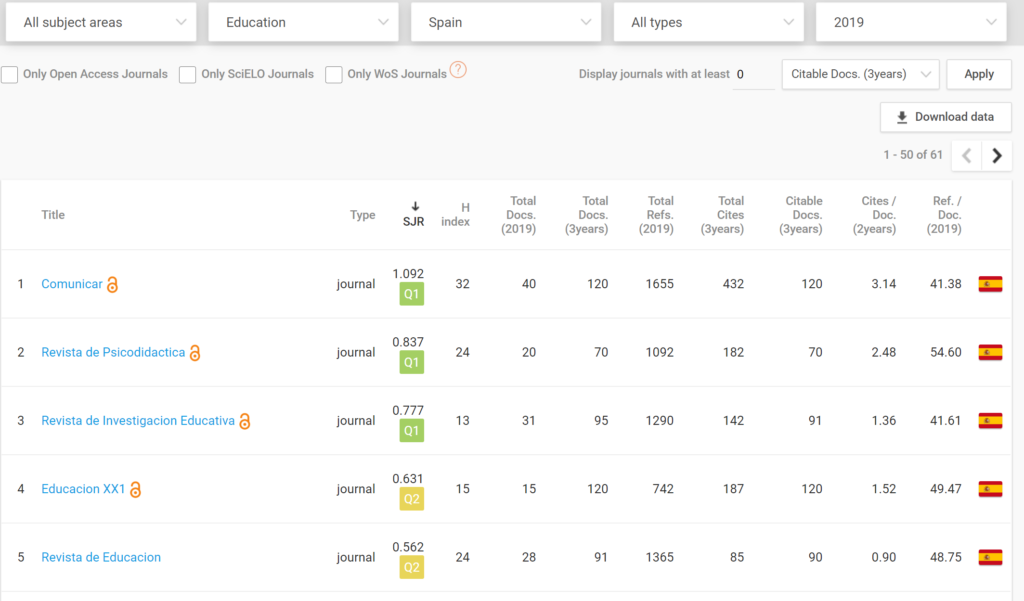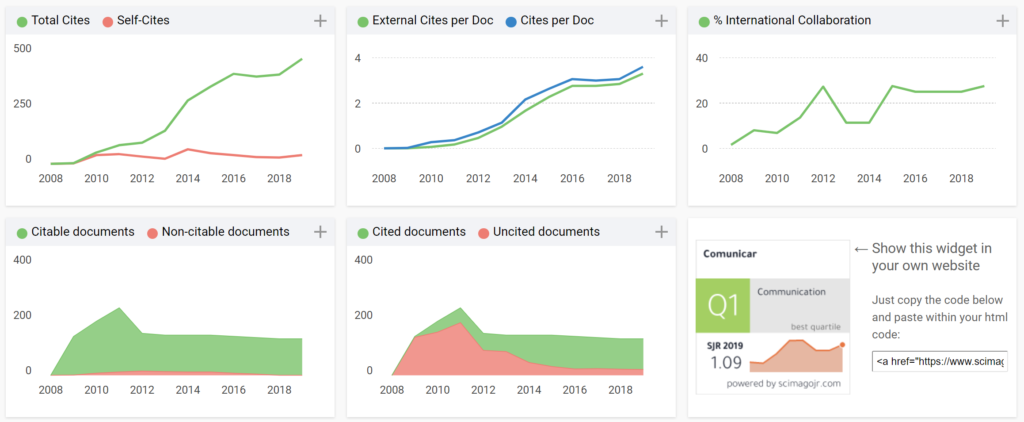Author: Ignacio Aguaded – Translation: Erika-Lucia Gonzalez-Carrion. Universidad Nacional de Loja, Ecuador
Indexing in scientific journals is today the external factor that measures the quality of publications. It is obvious that quality is a much more complex and global concept than the average impact on citations and the latter must be exclusively the consequence of a rigorous process of selection of the best manuscripts and the implementation of high visibility processes.
The famous rankings, made even more popular by the big data, allow us to position the journals according to their quartiles, deciles and even percentiles, based exclusively on the number of citations received by the works published in other publications, in a short period of time ranging from two to three years (depending on whether WoS or Scopus)
Scimago has just published its Scimago Journal Rank (SJR), the first international index of some reputation to come out in 2020. Its highly visual portal classifies 30,981 journals and proceedings (extracted from the more than 40,000 contained in Scopus), with their corresponding quartiles, basically respecting their areas of knowledge and regions/countries (https://bit.ly/2NdcOlR). This index has been so popular (due to its free access and its intuitive page) that many researchers (and even evaluators) mistakenly identify it with the Scopus index (https://doi.org/10.3916/club-de-editores-008). Since 2017, Scopus has had its official journal measurement tool on its own portal Scopus Preview, CiteScore: https://bit.ly/30YWbCr.
SJR also has a ranking that offers aggregate information by country (https://bit.ly/312In9U), classifying them according to the number of documents published in the journals indexed on the portal.
The results of SJR-2019 are usually ahead of the expected indexing of Scopus, as has happened this year.
In Spain, 659 journals appear in the index in 2019, a symbolic figure of just over 2% of the global base, which includes almost 31,000 journals and proceedings from all over the world, especially from the Anglo-Saxon area.

In the field of «Education» there are 61 Spanish magazines indexed, almost 10% of the Hispanic ones (https://bit.ly/2BsA5NG), being «Comunicar» the magazine that better consolidates its leadership position, as the first one, of the only three Q1 that appear in the ranking, with an accumulated of 432 citations that more than doubles the second one, with SJR of 1,092. It is significant to point out, in general, the little impact of our magazines, since the proportion of magazines of high impact (Q1) is very little significant and irrelevant, in front of the many Q4. In the area of «Cultural Studies», 50 Spanish journals from diverse fields are indexed this year, grouped in this miscellaneous section (https://bit.ly/2YMkkcE). «Comunicar» also consolidates its leadership position as the first Q1 magazine, being 6 the Spanish Q1 ones in this base.

Finally, the journal «Comunicar» is present in a third base, in the area of «Communication» (https://bit.ly/3ejq2cA), with 21 indexed journals, where this year, for the first time in many, it does not occupy the first place, but the second, being «Review of Communication Research», incipient journal in English, the one that leads the position with some rickety data: 5 indexed articles and 20 received citations, demonstrating the bibliometric system one of its main deficiencies in the quantitative application, without some minimums of contrast. However, a thorough interpretation of the data allows us to observe that «Communicating» maintains in this indexing the strength of its position in all indicators except the opaque SJR index: H-32, 432 citations and 120 documents published in the last three years, in a constant of 40 documents per year.

